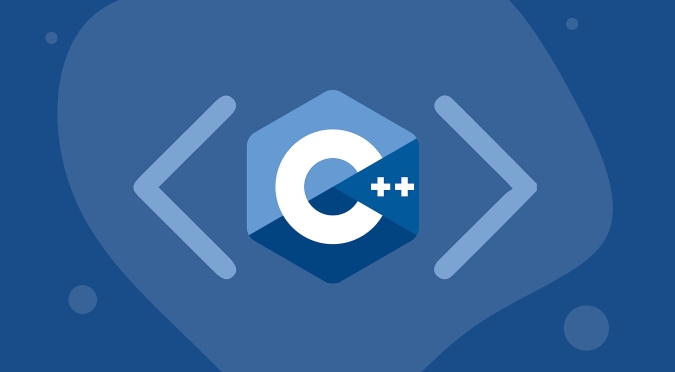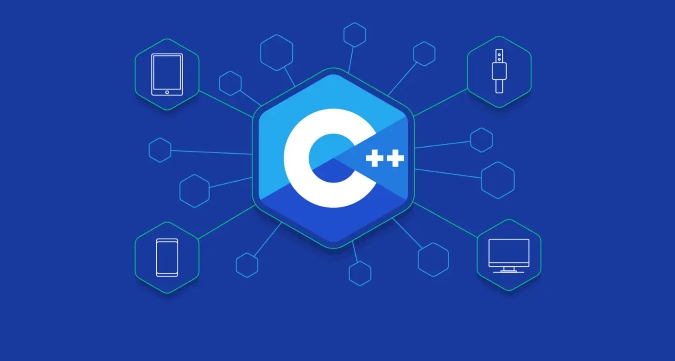Function hiding in C occurs when a derived class defines a function with the same name as a base class function, making the base version inaccessible through the derived class. This happens when the base function isn’t virtual or signatures don’t match for overriding, and no using declaration is used. 1. It blocks all overloads of the base function. 2. Name lookup stops at the derived class. 3. Fix it using using Base::func, explicit calls, or renaming. 4. Useful when intentionally restricting access but often unintended and should be managed carefully.

Function hiding in C is when a function in a derived class prevents the base class version of the same function from being accessible through the derived class. This usually happens when you have a function with the same name (but possibly different parameters or return type) in both the base and derived classes.

It’s important to note that this behavior is different from function overriding, which only applies to virtual functions and maintains a connection between the base and derived versions. Function hiding completely hides the base class's function when accessed via the derived class.

How Does Function Hiding Happen?
Function hiding occurs in C under these conditions:
- You define a function in a derived class with the same name as a function in the base class.
- The function in the base class is not declared virtual, or even if it is, but the signatures don't match exactly for override.
- The derived class does not explicitly use
using BaseClass::functionName;to bring the base version into scope.
For example:

class Base {
public:
void show() { cout << "Base show"; }
};
class Derived : public Base {
public:
void show(int x) { cout << "Derived show with int"; }
};Now, if you try to call show() without an argument on a Derived object, it won’t find the base version — it's hidden.
Why Does It Happen?
C uses a rule called name lookup: when you call a function like obj.show(), the compiler starts looking at the class of obj and stops as soon as it finds any function named show. If Derived has a show, it doesn’t bother checking Base.
This means even if the parameter lists are different, once you declare a function with the same name in the derived class, all base class overloads are hidden.
How to Fix or Avoid It
If you want to keep access to both versions of the function, there are a couple of options:
Use the
usingdeclaration in the derived class:class Derived : public Base { public: using Base::show; // brings Base's show into scope void show(int x) { cout << "Derived show with int"; } };Now calling
obj.show()will work again, andobj.show(5)will call the derived version.Alternatively, call the base class function explicitly:
Derived d; d.Base::show(); // calls Base's show
Or rename one of the functions to avoid conflict if hiding was unintentional.
- You're designing a derived class and intentionally want to remove access to certain inherited functions.
- You’re replacing functionality entirely and don’t want old versions to be used accidentally.
When Is It Useful?
Function hiding isn't always a bug — sometimes it's intentional. For example:
But in most cases, especially when working with inheritance hierarchies and expecting polymorphic behavior, it's better to use virtual functions and proper overriding instead of relying on function hiding.
So, function hiding is basically a side effect of how name resolution works in C . It can trip you up if you're not aware, but with using declarations or careful naming, you can manage it.
The above is the detailed content of What is function hiding in C ?. For more information, please follow other related articles on the PHP Chinese website!

Hot AI Tools

Undress AI Tool
Undress images for free

Undresser.AI Undress
AI-powered app for creating realistic nude photos

AI Clothes Remover
Online AI tool for removing clothes from photos.

Clothoff.io
AI clothes remover

Video Face Swap
Swap faces in any video effortlessly with our completely free AI face swap tool!

Hot Article

Hot Tools

Notepad++7.3.1
Easy-to-use and free code editor

SublimeText3 Chinese version
Chinese version, very easy to use

Zend Studio 13.0.1
Powerful PHP integrated development environment

Dreamweaver CS6
Visual web development tools

SublimeText3 Mac version
God-level code editing software (SublimeText3)

Hot Topics
 The difference between programming in Java and other languages ??Analysis of the advantages of cross-platform features of Java
May 20, 2025 pm 08:21 PM
The difference between programming in Java and other languages ??Analysis of the advantages of cross-platform features of Java
May 20, 2025 pm 08:21 PM
The main difference between Java and other programming languages ??is its cross-platform feature of "writing at once, running everywhere". 1. The syntax of Java is close to C, but it removes pointer operations that are prone to errors, making it suitable for large enterprise applications. 2. Compared with Python, Java has more advantages in performance and large-scale data processing. The cross-platform advantage of Java stems from the Java virtual machine (JVM), which can run the same bytecode on different platforms, simplifying development and deployment, but be careful to avoid using platform-specific APIs to maintain cross-platformity.
 How to reduce the use of global variables in C?
May 23, 2025 pm 09:03 PM
How to reduce the use of global variables in C?
May 23, 2025 pm 09:03 PM
Reducing the use of global variables in C can be achieved by: 1. Using encapsulation and singleton patterns to hide data and limit instances; 2. Using dependency injection to pass dependencies; 3. Using local static variables to replace global shared data; 4. Reduce the dependence of global variables through namespace and modular organization of code.
 c: What does it mean? Data bit c Median domain definition colon usage
May 23, 2025 pm 08:48 PM
c: What does it mean? Data bit c Median domain definition colon usage
May 23, 2025 pm 08:48 PM
In C, the bit field is a structure member that specifies the number of bits, used to save memory and directly manipulate hardware. Example: structMyStruct{inta:2;intb:5;intc:1;}. The advantage of bit domains is memory savings, but there are cross-platform issues, access restrictions and assignments that require caution. Example of usage: structStateMachine{unsignedintpower:1;unsignedintmode:2;unsignedinterror:1;}. Performance recommendations include arranging bit fields by size, avoiding overuse and adequate testing.
 Usage of ? in c Analysis of three-item operator instance in c
May 23, 2025 pm 09:09 PM
Usage of ? in c Analysis of three-item operator instance in c
May 23, 2025 pm 09:09 PM
The syntax of the trigonometric operator in C is condition?expression1:expression2, which is used to select and execute different expressions according to the condition. 1) Basic usage example: intmax=(x>y)?x:y, used to select the larger value in x and y. 2) Example of nested usage: intresult=(a>0&&b>0)?a b:(a==0||b==0)?a*b:a-b, used to perform different operations according to different conditions. 3) Error handling example: std::stringerrorMessage=(errorCode==0)?"Successful&quo
 Usage of c Typical application scenarios of logical non-operators
May 23, 2025 pm 08:42 PM
Usage of c Typical application scenarios of logical non-operators
May 23, 2025 pm 08:42 PM
The usage of logical non-operator! in C includes: 1) Basic usage: inverse the Boolean value; 2) Conditional judgment: simplify the code, such as checking whether the container is empty; 3) Loop control: processing elements that do not meet the conditions; 4) Function return value processing: determine whether the operation has failed. Pay attention to potential pitfalls such as pointer processing and operator priority when using!, but it can help write more concise and efficient code.
 How to create custom filters for cxImage in Debian
May 16, 2025 pm 08:51 PM
How to create custom filters for cxImage in Debian
May 16, 2025 pm 08:51 PM
Create a custom filter for cxImage in the Debian system. You can use the following steps: Prepare to install the cxImage library: Confirm that the cxImage library is installed. If it has not been installed, please use the following command to install: sudoapt-getupdatesudoapt-getinstalllibcximage-dev Install the development tool: Some development tools need to be installed to compile C/C code: sudoapt-getinstallbuild-essential Write custom filter creation filter code: Create a new C/C file, such as custom_filter.cpp
 How to use the image rotation function of Debian cxImage
May 16, 2025 pm 08:57 PM
How to use the image rotation function of Debian cxImage
May 16, 2025 pm 08:57 PM
In the Debian system, you can follow the following steps: Installing the cxImage library First, make sure you have installed the cxImage library. If it has not been installed, you can install it through the following command: sudoapt-getupdatesudoapt-getinstalllibcximage-dev Write the code Next, write a simple C program to show how to use the cxImage library for image rotation. Here is a sample code: #include#includein
 What is the use of python multi-domain application
May 21, 2025 pm 09:51 PM
What is the use of python multi-domain application
May 21, 2025 pm 09:51 PM
Python is widely used in data science, web development, automation, finance, scientific computing and other fields. 1) Data Science: Use NumPy, Pandas, TensorFlow and other libraries to process data and build models. 2) Web development: Django and Flask frameworks quickly build websites. 3) Automation: Write scripts to automate tasks. 4) Finance: Quantopian and Zipline are used for quantitative transactions. 5) Scientific Computing: SciPy and Matplotlib are used for data analysis and visualization. Python's simplicity and readability make it ideal for multiple fields.






